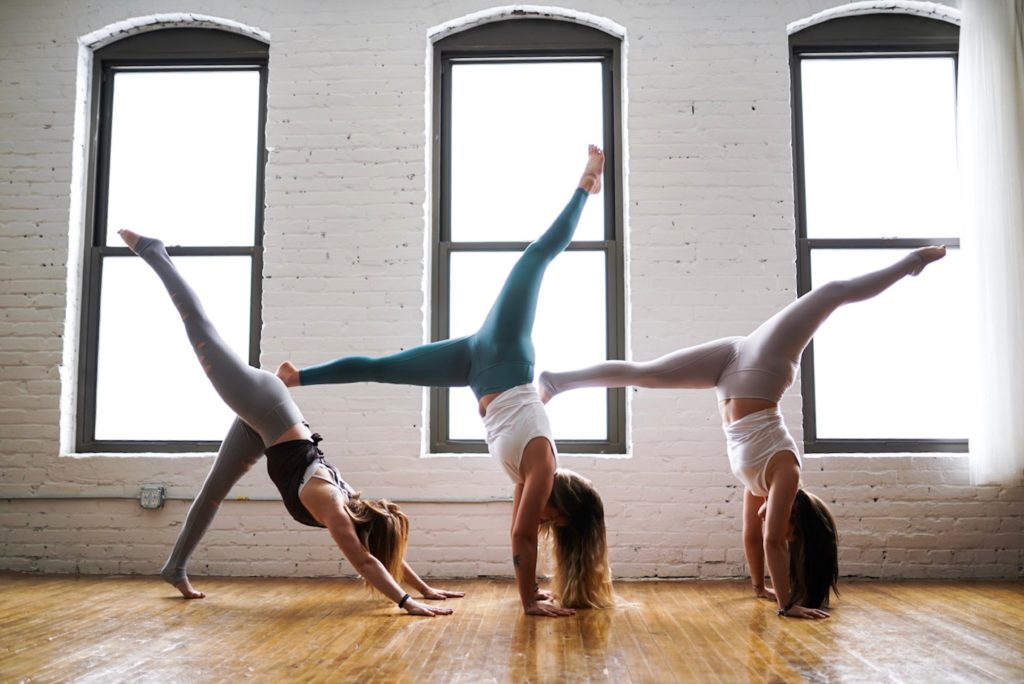Evidence shows that being physically active through regular exercise helps preventing or managing a variety of health problems and concerns, such as high blood pressure, stroke, metabolic syndrome, type 2 diabetes, many types of cancer, arthritis as well as depression and anxiety. Physical exercise is especially important in childhood and young adulthood as regular exercise has been proven to help against a range of medical conditions and diseases. The benefits are huge and they are both physical as well as mental.
Different types of exercises bring specific different benefits. For example, regular aerobic exercise can aid in weight management and prevention of diabetes. Resistance exercise, such as weight lifting, can increased strength, bones and joints, while exercise that promotes flexibility, such as yoga, can be particularly beneficial to the musculoskeletal system.
The mechanics of exercising

There are 11 organ systems in our body (brace yourself, these are: integumentary, muscular, skeletal, nervous, circulatory, lymphatic, respiratory, endocrine, urinary/excretory, reproductive and digestive – don’t worry we won’t test you on this!) that work together in a harmonised way to keep us healthy.
Whenever we do any type of exercise, our muscles begin to make demands on the rest of the body. For example, during strenuous exercise the heart beats faster so that it can pump more blood to the muscles while the stomach shuts down so that it does not waste energy that the muscles can use. This is why during physical activity we can experience changes in ventilation and even changes in muscle activity.
One single episode of physical activity can cause great but brief changes in the physiology of the body organs, but for specific long-lasting health changes we have to repeat the exercise over and over with dedication and persistence. Simply put we need an exercise or fitness routine: we need training! Repeated activity can change the shape of our bodies, their size and even their functionality but in order to maintain fitness and continue seeing results we need to push the cardiovascular, respiratory and musculoskeletal systems to work harder by increasing and changing the exercise. Why? Because as our body gets fit, it also gets used to the exercise. The good news is that we don’t need to be athletes, who undergo intense regular fitness, to feel the positive effects of regular exercise as benefits can be achieved even by doing moderate and regular physical activity.

The response of the body to long term exercise varies from person to person. This is because we have very unique genetic differences. However, many of the beneficial effects of training exercise, be it weight lifting or aerobics, diminishes with a matter of weeks if the physical activity is substantially reduced. Furthermore, the beneficiary effects can even disappear in a matter of months if training exercise is not resumed. Bye-bye muscles and flat belly!
Interestingly, although for many years the recommendation for treating chronic pain was to rest and be inactive, recent studies have shown that exercise can actually relieve chronic pain and improving the quality of life. Some of these conditions that have shown to be improved by regular exercise are chronic low back pain, fibromyalgia and chronic soft tissue shoulder disorder. Additionally, it can also increase pain tolerance.
Evidence and benefits of physical activity explained
As mentioned above the benefits are huge. But what are they? Let’s take a look:
- Improving blood pressure and preventing strokes

Exercise improves blood pressure which in turns helps preventing strokes. Uncontrolled high blood pressure can lead to stroke by damaging and weakening your brain’s blood vessels, causing them to narrow, rupture or leak. High blood pressure can also cause blood clots to form in the arteries leading to your brain, blocking blood flow and potentially causing a stroke. Of course, some people have risk factors for cardiovascular disease which are independent of lifestyle, for example, having a family history of heart disease. But even for these people, being fit and active is still important and can offset their relative risk of mortality.
- Can help preventing cancer
There is also a lot of evidence suggesting that exercise can help prevent cancer. Being physically active reduces the risk of developing colon cancer by approximately 35%, and breast cancer by approximately 25% when compared with people who remain inactive. There is also a lot of evidence to suggest that it can even prevent other diseases such as endometrial cancer.
- Supporting fast metabolism

Exercise is crucial in supporting a fast metabolism, burning calories, maintaining muscle mass and losing weight. Inactivity can cause weight gain and obesity. Daily physical activity is essential to maintaining a healthy weight and reducing the risk of chronic disease. Studies show a strong link between the lack of regular physical activity and chronic disease as inactivity can lead to significant increases in belly fat, which in turns increases the risk of type 2 diabetes, heart disease and early death. There is a lot of supporting evidence showing that waist size has a direct link with type 2 diabetes risk.
As recommended by the British NHS (National Health Service) regardless of your height or BMI, you should try to lose weight if your waist is 94cm (37ins) or more for men and 80cm (31.5ins) or more for women. You are at very high risk and you should contact your GP if your waist is 102cm (40ins) or more for men and 88cm (34ins) or more for women.
- It is good for our muscles
Exercise such as weight lifting, for example, can stimulate muscle building when paired with adequate protein intake. This is because exercise helps release hormones that promote the ability of your muscles to absorb amino acids which helps them grow and reduces their breakdown. With age we tend to lose muscle mass and function, which can lead to injuries and disabilities. This is why it is so important to keep being active as we age.
- Promoting bone strength

Exercise is also very good for our bones as it helps build bone density while we are young and preventing osteoporosis later in life. The activity, however, must be such that force is transmitted through the bone. For example, jumping will be more beneficial than swimming. This is because jumping is weight-bearing and the impact with the ground encourages the maintenance of bone mineral density. This also explains why impact exercise such as running, gymnastics, soccer and baseball have been shown to promote higher bone density over non-impact sports such as cycling and swimming.
A healthy musculoskeletal system is associated with psychological well-being, improved quality of life and functional independence which is especially important for people later on in life.
- Improving blood flow and antioxidant protection
If you thought it could not get any better, then hear this: regular moderate exercise can provide antioxidant protection and promote blood flow, which can protect your skin and delay signs of ageing! This is because when the body’s antioxidant defences cannot completely repair the damage that free radicals cause to cells, oxidative stress occurs and it can deteriorate your skin.
- Improving blood flow and brain health
As regular exercise improves blood flow to the brain it is also thought to help brain health, memory and mental function. This is true both for adults and children. In fact, there is evidence to suggest that regular physical activity can lower the risk of cognitive decline by approximately 20%. Furthermore, very interestingly, exercise has been shown to reduce changes in the brain that can cause Alzheimer’s disease and schizophrenia.
- Improving mood and helping with depression, anxiety and stress

Exercise has been shown to improve the mood as well as decreasing feelings of depression, anxiety and stress. This is because exercise can increase the production of endorphins, which are known to help produce positive feelings and reduce the perception of pain. It can also increase brain sensitivity for the hormone’s serotonin and norepinephrine, which relieve feelings of depression. Needless to say, physical activity can provide a distraction and improve mood, in fact, there are many studies over the benefits of regular exercise to combat negative and low moods.
A study in 24 women who had been diagnosed with depression showed that exercise significantly decreased feelings of depression and one study across 26 healthy men and women, who normally exercised regularly, showed that those who stopped exercising for two weeks experienced increases in negative mood.
- Boosting energy levels and reducing feelings of fatigue

Exercise is a real energy booster and studies have shown that engaging in regular physical activity can increase energy levels in healthy people. It can even reduce feelings of fatigue in people who suffer from chronic diseases syndrome (CFS) and increase energy levels in people suffering from progressive illnesses such as cancer, HIV/AIDS and multiple sclerosis.
- Stimulating good sleep
Regular exercise can help relax, sleep better and feel more energized during the day. Studies have shown beneficial effects for the elderly, who tend to be affected by sleep disorders, and even people with insomnia. This is because during exercise we use lots of energies which stimulates recuperative processes during sleep.
- Improving sex drive
Lastly, exercise can help improve sexual desire as well as function and performance in both women and men. It is also thought to help decrease the risk of erectile dysfunction in men. This is because engaging in regular exercise can improve blood circulation, strengthen the cardiovascular system, enhance flexibility and tone muscles, all of which can improve your sex life. Plus, as you look and feel better due to the exercise, you also become more confident.
Summary

The benefits of exercising are huge. Whether you walk to work, train for a specific sport, opt for a mix of exercise classes or simply take up dancing in your own sitting room, as long as you follow the guideline of 150 minutes of activity per week (30 minutes a day 5 times a week), inevitably you will improve your health in more than one way! So, what are you waiting for?



